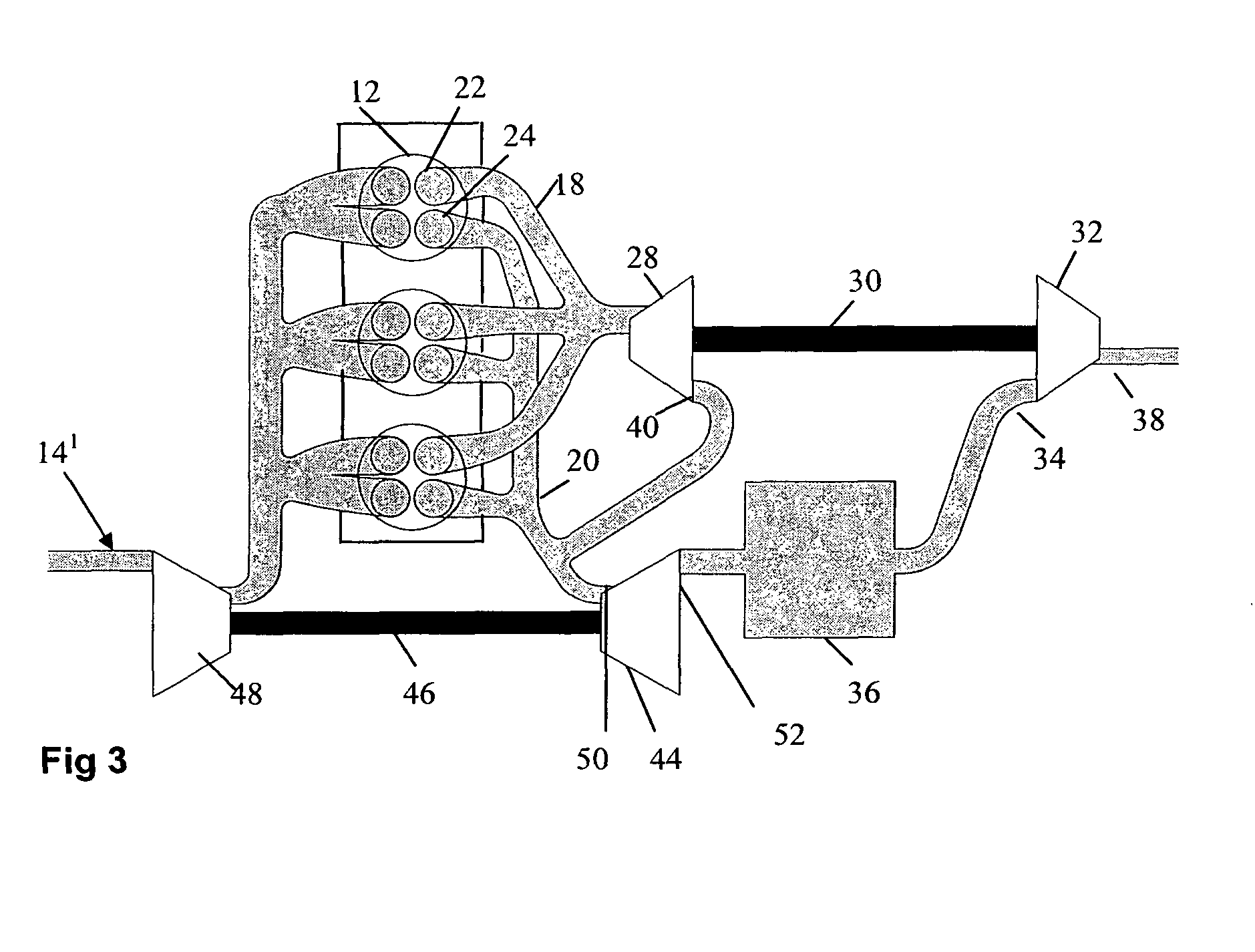Exhaust arrangement for an internal combustion engine
a technology for internal combustion engines and exhaust pipes, which is applied in the direction of exhaust treatment, position/direction control, and addition of non-fuel substances to fuel, and achieves the effect of reducing the exhaust back pressur
- Summary
- Abstract
- Description
- Claims
- Application Information
AI Technical Summary
Benefits of technology
Problems solved by technology
Method used
Image
Examples
Embodiment Construction
[0026]Referring to FIG. 1 a reciprocating internal combustion engine 10 comprises at least one reciprocating piston (not shown) located within a corresponding cylinder 12 and connected in a conventional manner to rotate a crank shaft (not shown). The movement of the piston within the cylinder 12 defines a swept volume within the cylinder. An inlet arrangement 14 supplies fresh air, a fuel-air mixture or a fuel-air-EGR (exhaust gas recirculation) mixture to each of the cylinders 12 which is then compressed by movement of the piston within the cylinder 12. Combustion then takes place within the cylinder 12 and the expanding gases drive the piston and crank shaft. The combustion gasses are then exhausted from the cylinder 12 and internal combustion engine 10 via an exhaust system 16. The internal combustion engine 10 may have any number of cylinders 12 and corresponding pistons with this particular embodiment the engine 10 having three cylinders 12. The inlet arrangement 14 may compris...
PUM
 Login to View More
Login to View More Abstract
Description
Claims
Application Information
 Login to View More
Login to View More - R&D
- Intellectual Property
- Life Sciences
- Materials
- Tech Scout
- Unparalleled Data Quality
- Higher Quality Content
- 60% Fewer Hallucinations
Browse by: Latest US Patents, China's latest patents, Technical Efficacy Thesaurus, Application Domain, Technology Topic, Popular Technical Reports.
© 2025 PatSnap. All rights reserved.Legal|Privacy policy|Modern Slavery Act Transparency Statement|Sitemap|About US| Contact US: help@patsnap.com



